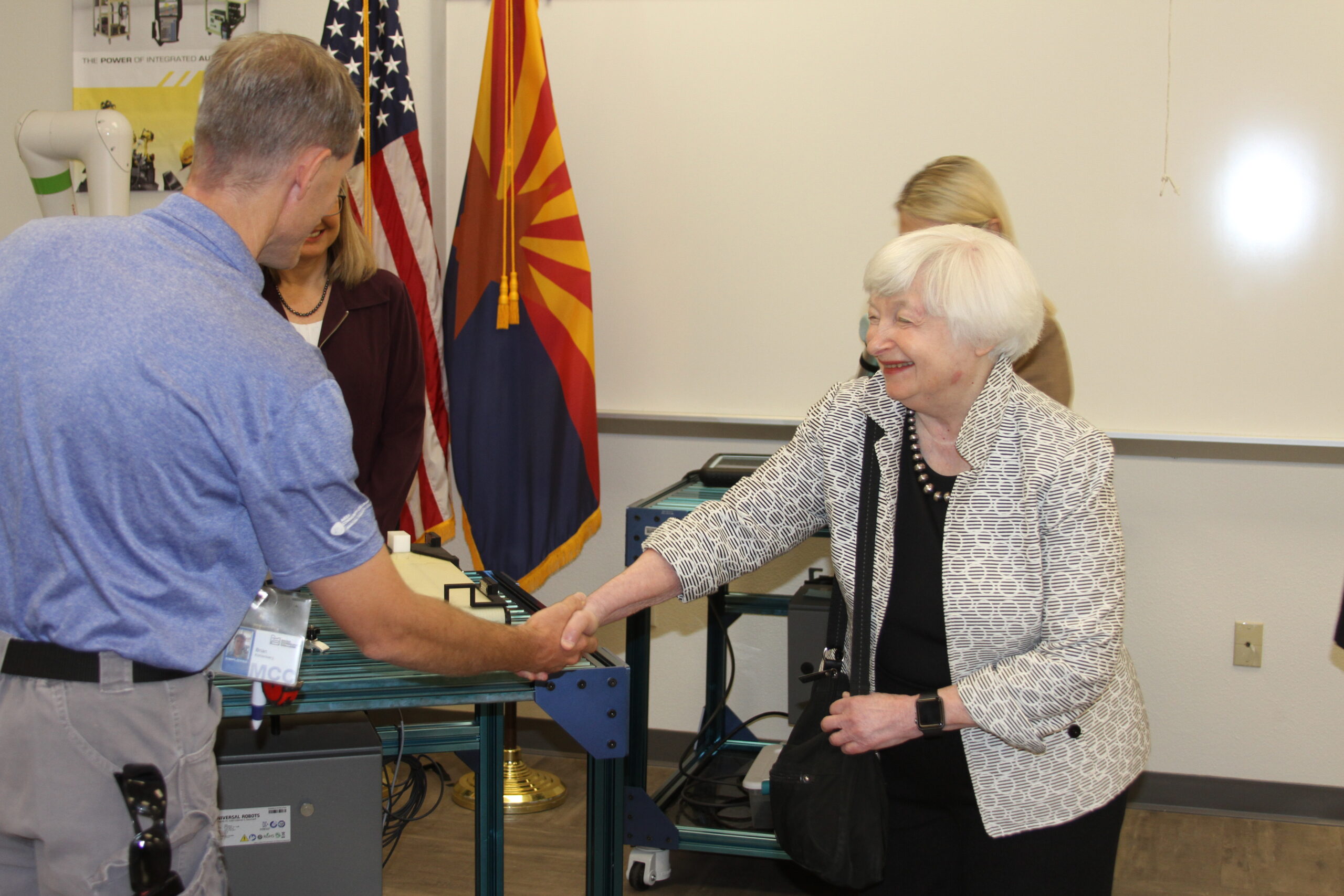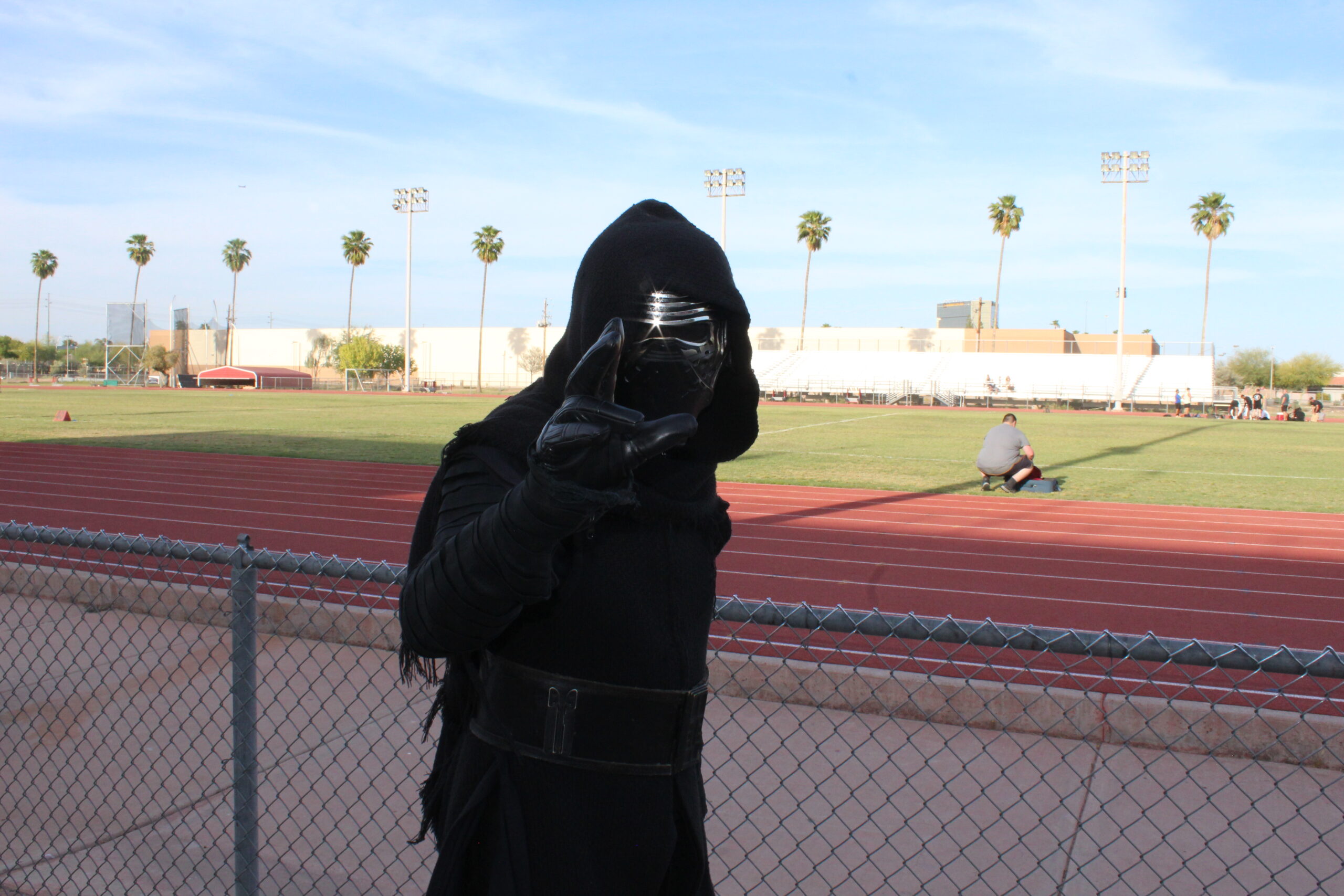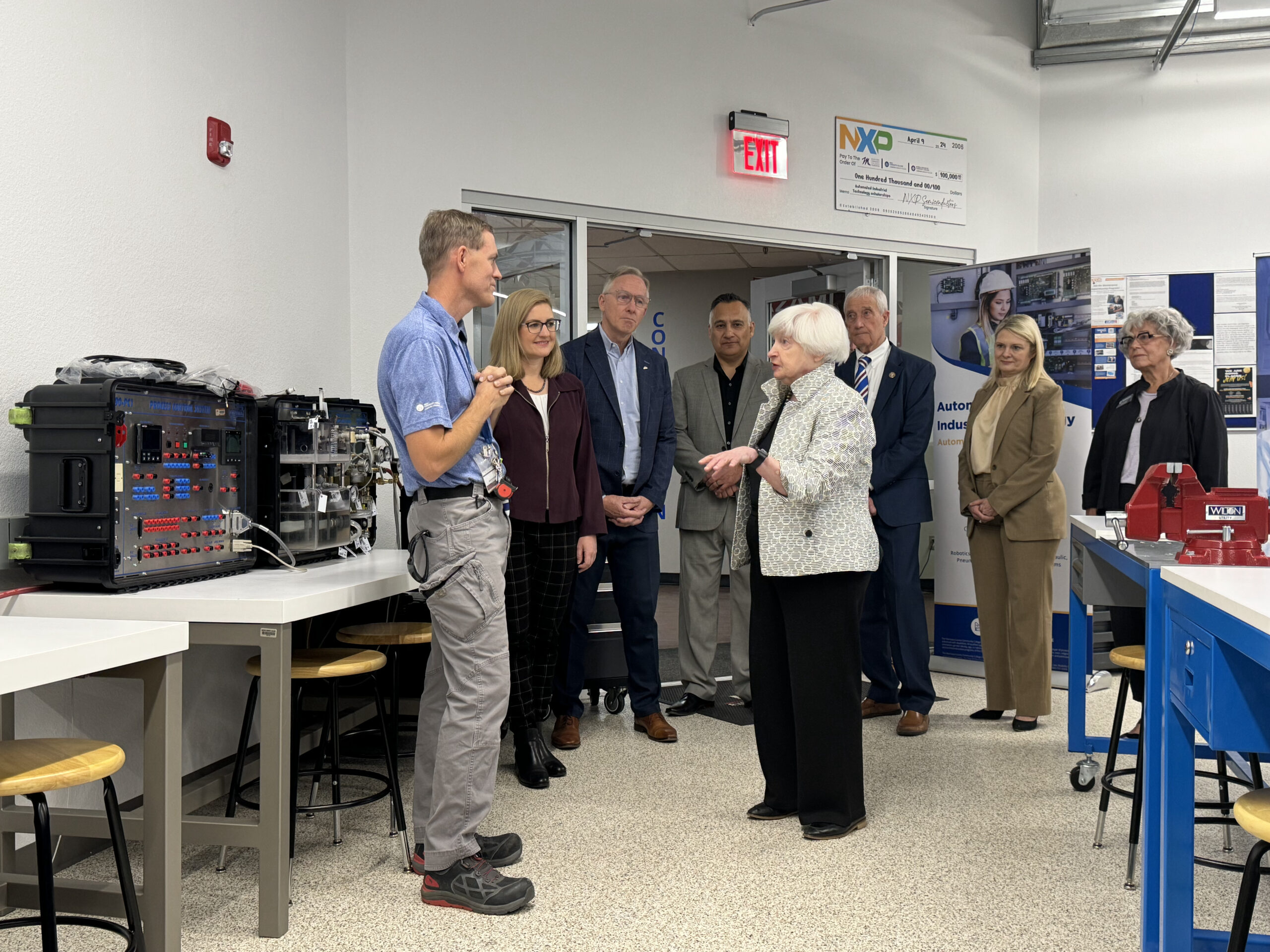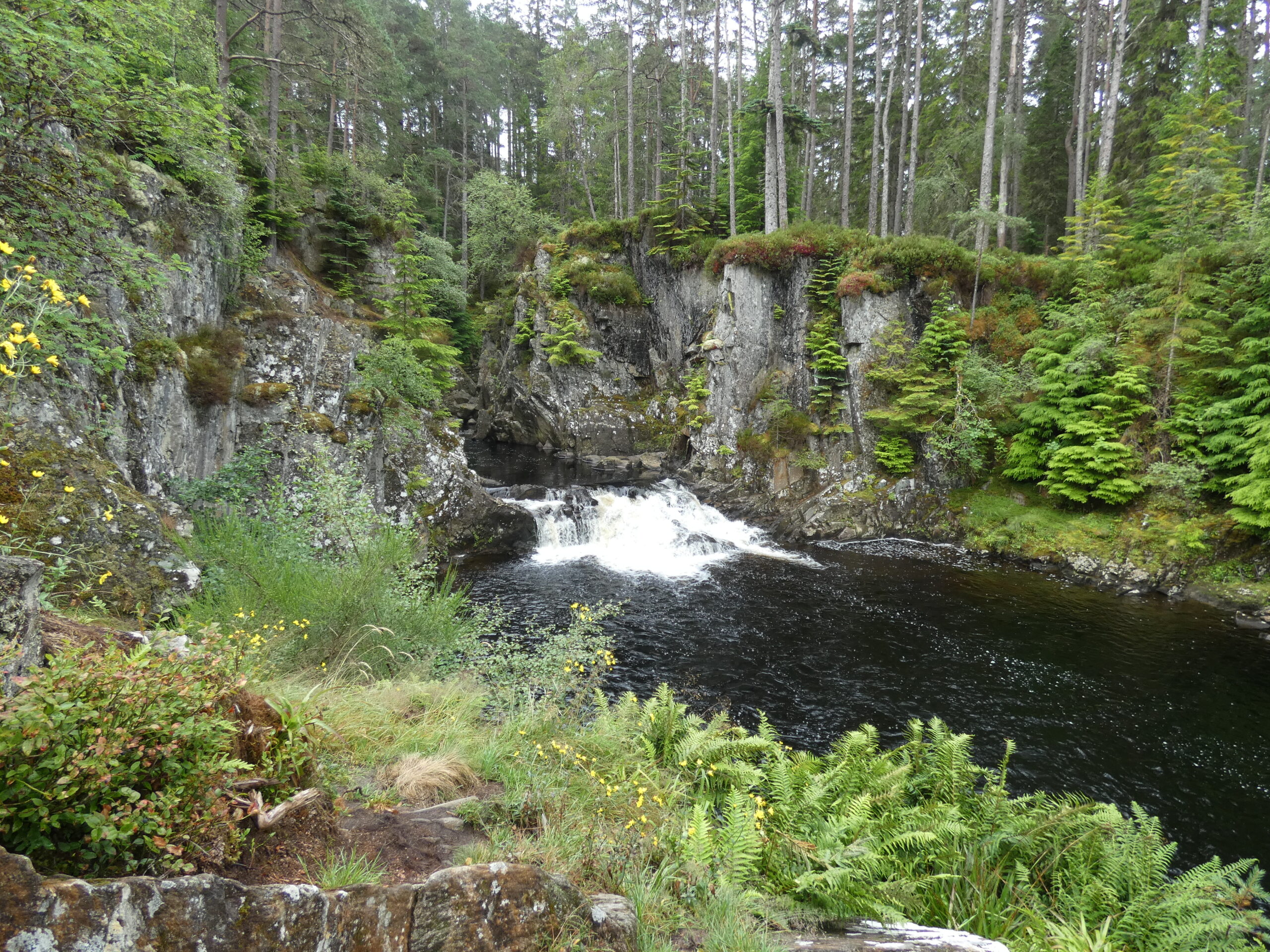United Kingdom study abroad: Highlands
It was a dreary final day in Edinburgh, overcast with a slight drizzle.
My excited haste helped push me through the morning gloom. My tour of the highlands was set to start at eight in the morning, and I wanted to be ready to go at least half an hour beforehand.
Rabbie’s Tours operated out of a cozy coffee shop that sold sandwiches and beverages. My order consisted of an americano and warm smoked salmon and cream cheese sandwich when it opened.
It was a delicious breakfast that was hastily devoured while waiting to find out which bus to board.
The driver, Dave Ozog, was a cheerful young red haired man. He drove one of several identical silver vans with, “Rabbie’s Tours,” written on the side.
The inside was spacious, with black leather seats, wide windows, and folk music playing softly.
As the first person to arrive, I got my pick of the seats. It took very little consideration for me to choose the seat behind Dave. It was the ideal spot to ask questions during the tour without needing to shout to make myself heard.
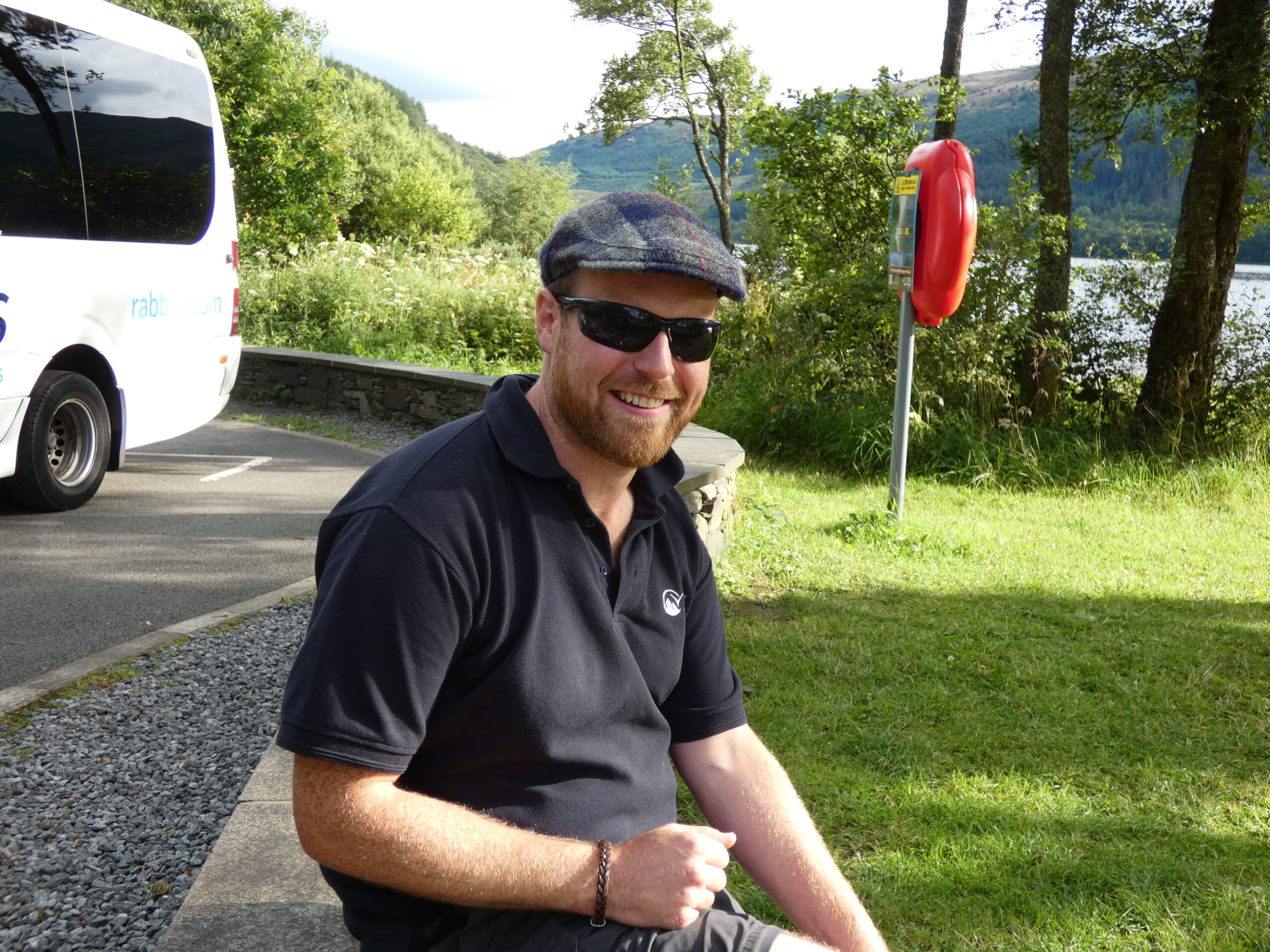
It took about ten minutes for everyone to arrive, the last of which was a couple who were not afforded the same freedom of choice.
The tour had been booked to capacity and the only seats left were on opposite sides of the bus.
The man protested being separated from his girlfriend before grumpily sitting down in one of the only open seats, which happened to be next to me.
It was a little uncomfortable, but the hope was the tour would go smoothly now that we were all seated.
My discomfort faded as we drove out of Edinburgh. Dave told us the section of the city known as “oldtown” was the historical city.
“Newtown” was created when “oldtown” became overcrowded and is recognizable by its more modern architecture. At this point, not even half an hour into the tour, sitting behind Dave seemed to have been a very wise decision indeed.
Our trip out of Edinburgh took us over a bridge and through the quaint city of Dunfermline.
Dave told us the city had a population of under 50,000, meaning it was not a city because of its size, but because of its historical importance.
Shortly after, we passed the first of many beautiful sights in the form of Loch Leven, one of the largest lowland lochs in Scotland.
A bright rainbow cut through the dewy morning sky, which was well worth a picture, but the trials of taking a photo from the inside of a moving van prevented me from getting anything of high quality.
Fog rolled in soon after, a mere 45 minutes into the tour. It seemed to be remarkably heavy, but then Dave corrected me by pointing out it was just a light fog by Scotland standards. He called it ‘low cloud and drizzle’.
Fortunately for us, the sun reappeared to cast the low cloud and drizzle away before very long.
The van drove by Perth, the original capital of Scotland. Dave took the opportunity to explain it was originally chosen due to its advantageous political and geographical location during the viking era.
Our passage through the Highland Boundary Fault, a series of hills separating the Scottish highlands from the lowlands, was marked by another rainbow.
The rest of the scenery consumed my attention anyways.
The lowlands were beautiful, but the highlands were something else entirely. We had gone from misty moors to a world of lush greenery, from springy ferns to thick green trees that reminded me of my time spent deep in the woods of northern Wisconsin.
Fort Augustus was the home of Loch Ness, and the first major stop of the tour.
I was going to go on a boat tour of the famous loch, however we made a half-hour-long stop in the town of Pitlochry first.
The group dispersed quickly when we pulled into the van.
Dave suggested stopping at a small bakery called “McKenzie’s”. It displayed a wide, colorful array of homemade pastries.
A strawberry tart ended up being my choice. Strawberries were set to be the theme of that stop, it seemed, as I purchased a carton of farm-fresh strawberries from a street stall on the way back to the bus.
It was the perfect balance of sweet and tangy, with ripe strawberries coated in a sugary glaze, a rich custard base that amplified their flavor, and a buttery, flavorful, yet understated shortbread crust that pulled it all together.
A small drama erupted when it was time for us to depart. The man who had caused some trouble before we departed, and his girlfriend, chose to steal other people’s seats rather than return to their own.
The couple refused to move when the people whose seats they had taken asked them to. Complaints were aired and arguments threatened to erupt as we found ourselves looking down the barrel of reshuffling the entire bus to satisfy one couple’s demands.
Fortunately, Dave stepped in before the situation could get too dire.
He said taking someone else’s seat was not allowed, and he would not move the van until the couple returned to their original seats. The man complained, saying it was not fair he and his girlfriend had to be separated, but Dave held firm.
I was grateful for Dave. That did nothing to soothe my awkwardness when the man returned to my side, back turned from me and arms crossed in a manner that reminded me of a petulant child. The best plan seemed to be to ignore him as we departed Pitlochry and continued on our journey.
Moving on from the disturbance was easy thanks to Dave. He told us about the sections of the forest we were traveling through as we drove.
When we passed Killiecrankie, he told us a little bit about the history of the Jacobite rebellion. It was a long ride, yet between the beautiful scenery and all there was to learn, it never got boring.
Our path to Fort Augustus took us past Ben Nevis, the highest mountain in the United Kingdom.
Trees gave way to high hills swathed by clouds and fog for a time. I stared through the window, mesmerized, as we drove through the small village of Dalwhinnie.
Dave told us the village was mostly known for its whiskey distillery, the highest distillery in all of Scotland.
Hills turned back into forests after we passed through Dalwhinnie.
Dave announced we were good on time and decided to take us on a short detour. He pulled over in a small lot by the river Pattack. The river ran through a gorge in the forest and created a small waterfall near where we had parked.
It took a bit of a climb up a small rocky incline to get photos from the best angle, it was necessary nonetheless. Unfortunately, our schedule meant we were only able to stop for about five minutes.
Every one of those five minutes were savored, soaking in the sight of dark white-capped waters rushing over light brown cliffs framed by verdant green. If we had more time and it was a little warmer, we could have waded into the water at the sandy bank only a handful of yards below.
We reluctantly left the river behind, but the knowledge of more adventures ahead of me made it a bittersweet parting rather than a truly sorrowful one.
Lochs became a common sight as we drove onward and the caffeine from my earlier americano began to wear off. I found myself struggling not to doze off despite the gorgeous scenery surrounding me.
Another shift in the environment jolted me back to awareness.
We had reached the great glen, where the hills were so high and the clouds so low that they met in an intermingling of land and sky. Some of the hills looked like they were smoking. This represented another opportunity for pictures, but the seemingly endless trees we passed by prevented me from getting any truly good angles.
The earlier gloom had cleared up by the time we reached Fort Augustus. The weather above began to show a sunny, bright blue sky.
It was around noon and my boat tour of Loch Ness was due to start soon. I got myself an unremarkable bagel sandwich and a plain latte, purchased due to my need for caffeine rather than any actual flavor, and hurried back to the pier.
All the seats on the top of the tour boat had been filled up quickly. The only seat option available for me was a seat inside the cabin.
It was a comfortable space, with burgundy and brown seats and good airflow. There was a seat next to the window for the beginning of the tour, allowing me to gaze out and listen to the narration pouring through the speakers.
The seat only lasted for five minutes.
The tour itself was good and informative, but a clear view of the water was of higher interest at the time.
The guide’s narration was lost over the sound of the water. The mesmerizing sight of the boat’s wake prevented me from caring. The swirling water was near black, but one could catch shades of mossy green and foamy white caps at the top of the little waves stirred up by the boat.
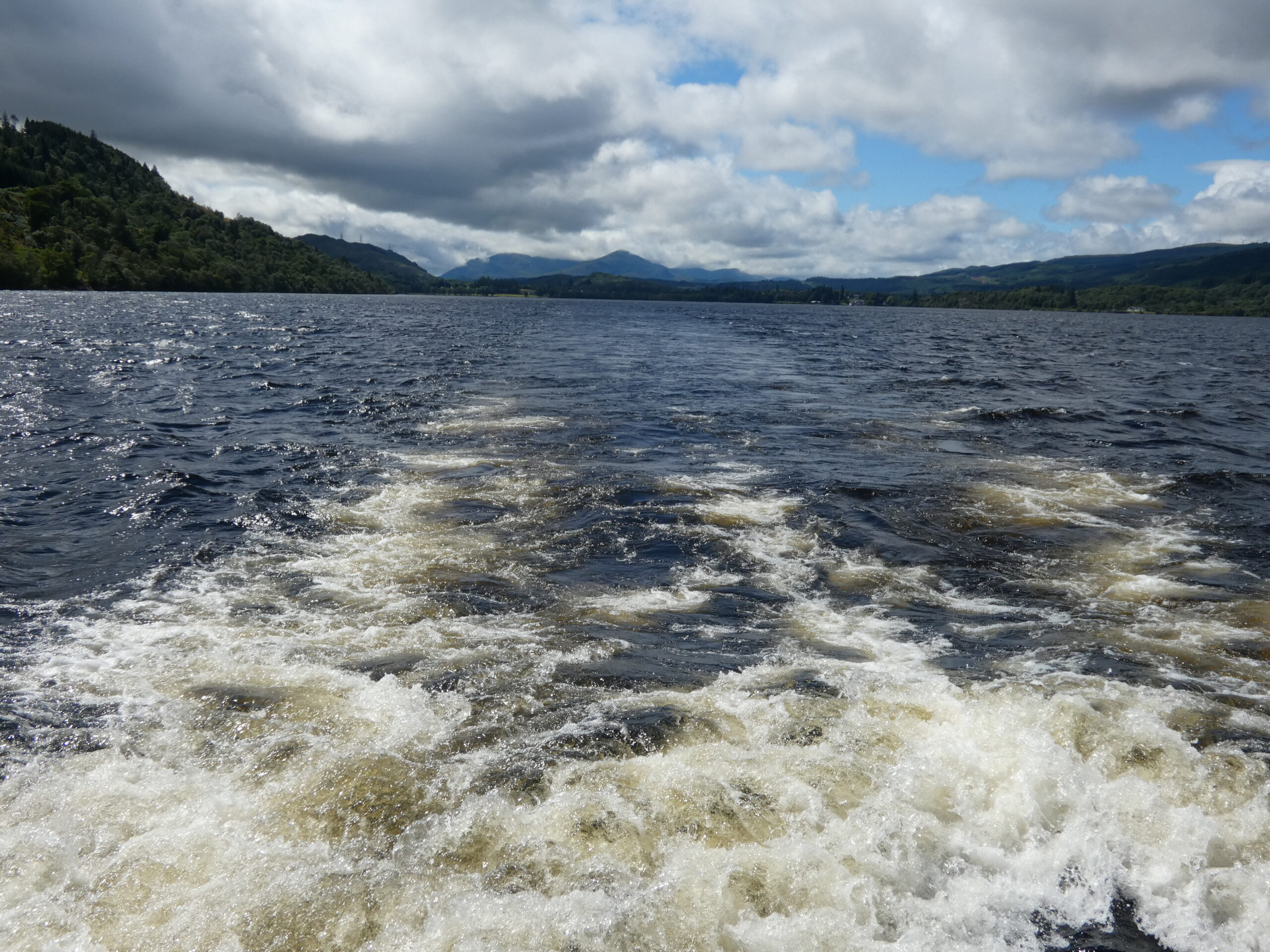
I must have stared downward for a solid five minutes, completely entranced, before finally turning my attention to the rest of my surroundings.
Being on Loch Ness felt a little like being inside a big green bowl.
Grassy, tree-covered hills surrounded the loch from all sides. Patches of rocks studded some of them. It was not quite as eye-catching a sight as some of the hills and mountains we had passed on the way up.
Large bodies of water have always held a certain allure to me. Going for a swim in Loch Ness sounded like a perfectly fine idea if not for the fact the water was murderously cold and people were not allowed into it.
It was time to re-board the bus almost as soon as the boat tour ended. Our next destination was Glencoe.
This was the moment to dig into the strawberries I had purchased earlier. They were large, bright red, and ripe. Their taste was sweet with a tangy undercurrent and a hint of acidity that left my mouth tingling. Surprisingly, they were texturally different from the strawberries from America. They were softer and a little mealy, but not at all unpleasant.
It was undecided if turning to address the man sitting next to me was a good decision.
After the earlier disruptions, there were plenty of reasons to suspect that it would not go well. Ignoring the person next to me grew old, and the risk seemed to be worth it.
Luck was on my side, as explaining to him I was a journalist and wanted to be near the driver to ask questions resulted in him simply stating he understood.
The atmosphere between us grew much more comfortable after that.
The rest of the ride to Glencoe was filled with Dave talking about the local ecosystem and the history of the clans that once roamed the Scottish highlands.
Outside my window, there was the sight of a seemingly endless string of lochs. It made a long ride pass by in what felt like minutes.
Before long, Dave pulled over once more. He had decided to treat us to a stop at Loch Linnhe since we were still good on time.
There was a pebble beach that led to a shoreline covered in dark strings of kelp and a thick layer of orange and green algae.
The water was chilly. I lowered myself down as close to the surface before taking photos of the dark, placid waters and the seemingly smoking mountains surrounding them.
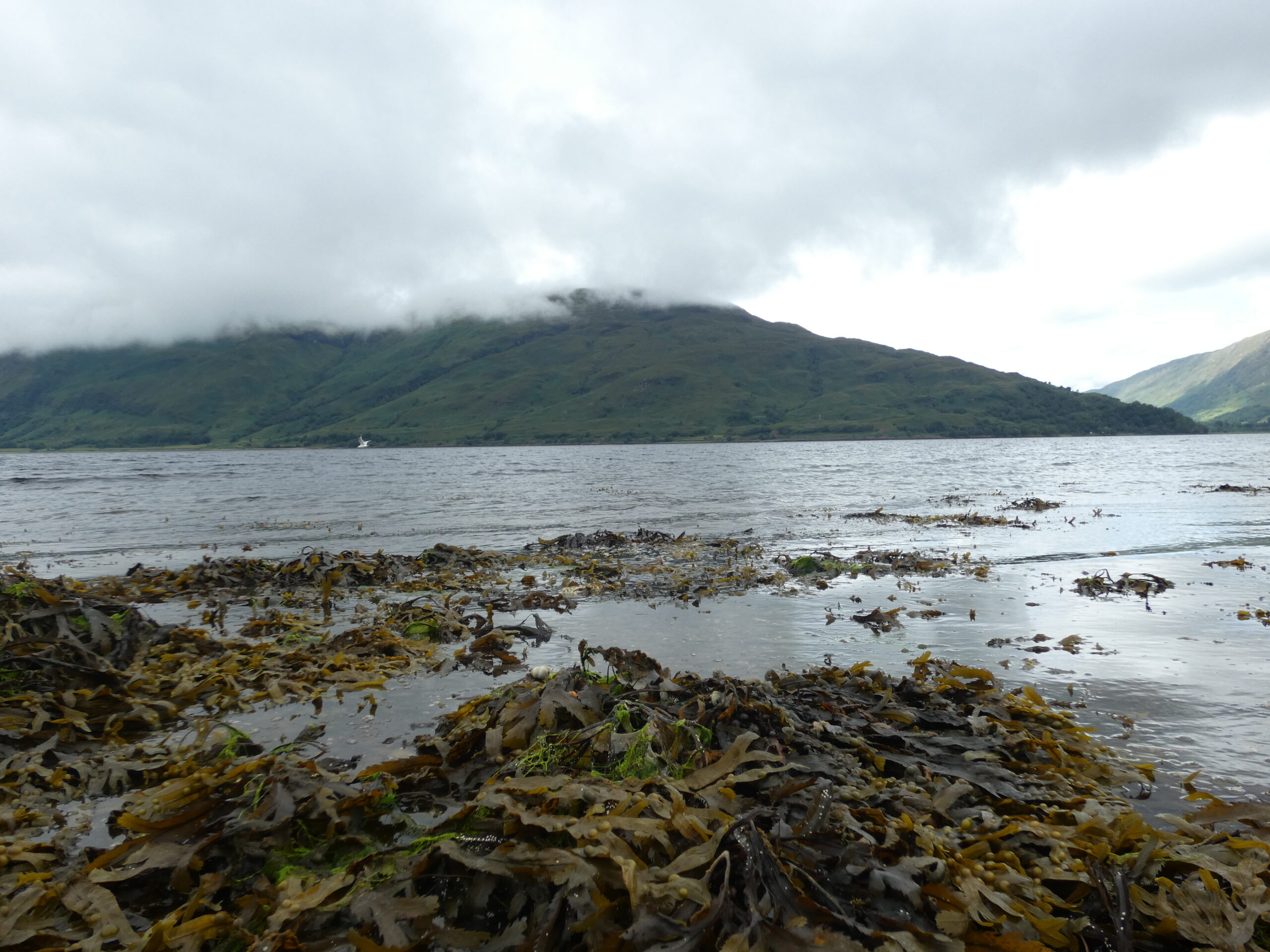
We reached Glencoe soon after re-boarding the bus. We were going to be making multiple stops while there. In Dave’s words, you can’t see Glencoe from only one angle.

Our first stop was a visitor center. It was drizzling by this point, but the rising fog added to the atmosphere more than anything. Our first stop was a visitor center. It was drizzling by this point, but the rising fog added to the atmosphere more than anything.
The inside of the visitor center offered information about the history of Glencoe, a gift shop, and a little cafe. There were hiking trails, a viewing platform, and a replica black hut outside.
There was a platform which overlooked a field surrounded by grassy, crowd-shrouded mountains. Glencoe was an enormous valley, but looking up from a central spot allowed me to truly envision it.
Blackhouses were the temporary houses that the Scottish clansmen used to live in. Dave told us that they were not made to last and needed constant repairs.
The replica was a tiny structure with thin wooden walls, a thatched straw roof, a small entryway, and a round room with a fire pit in the center.

Dave said upwards of ten people would live in a single blackhouse. It seemed a little less unfathomable after he clarified the blackhouses were largely only used to sleep in, but no less uncomfortable.
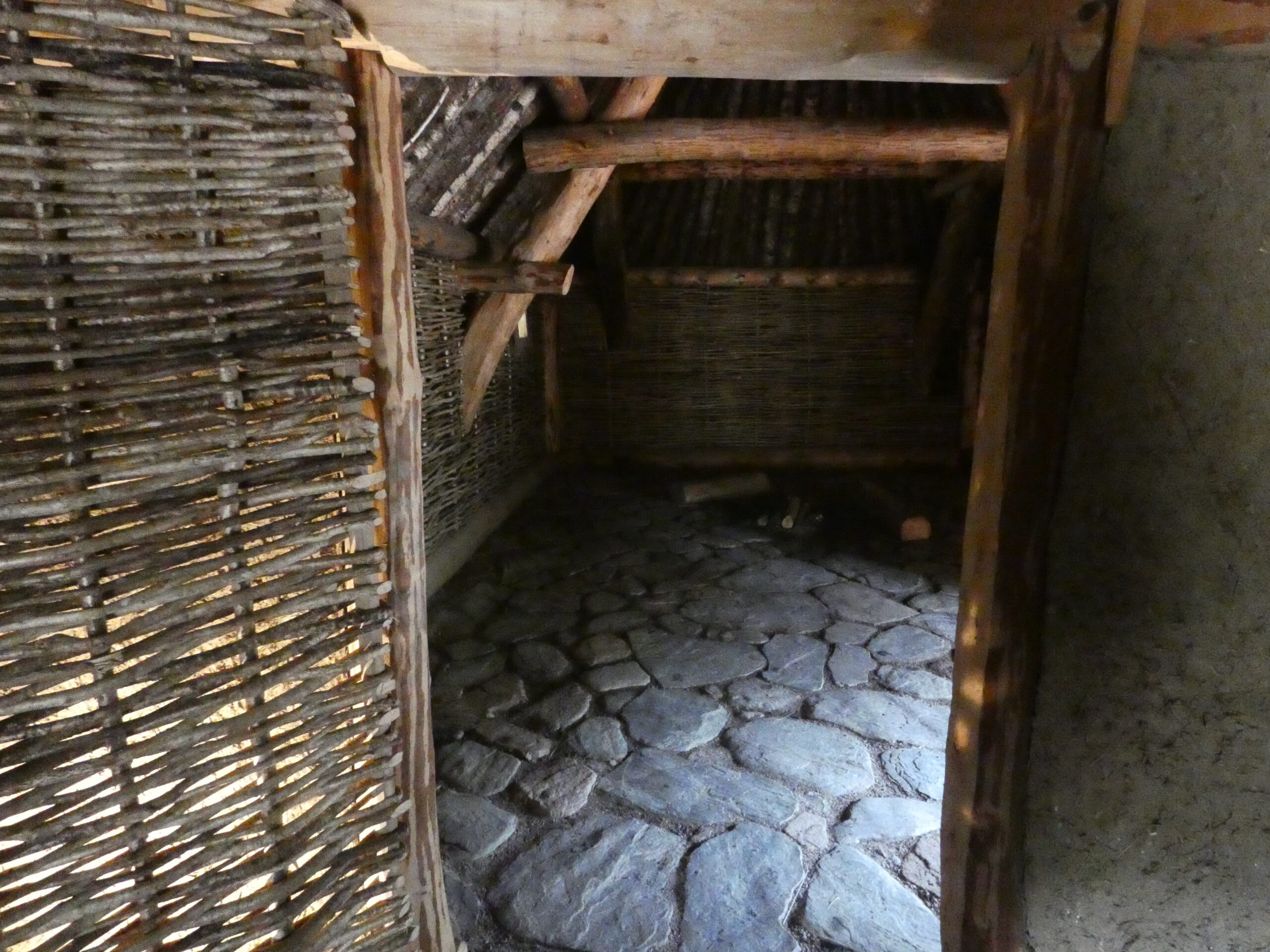
We only had a little time left at the visitor center after the blackhouses.
It was raining harder when we stopped at Loch Achtriochtan, though everyone got off the bus anyway.
Atriochtan was a longer, narrower loch than Linnhe. The weather had left the mountains surrounding it all but completely shrouded in fog.
We did not stay at Loch Atriochtan long before re-boarding the bus.
A short drive took us to the side of a hill across from the three sisters of Glencoe, another term for the Aonach Dubh, Beinn Fhada and Gearr Aonach mountains. They are also known as Bidean Nam Bian.
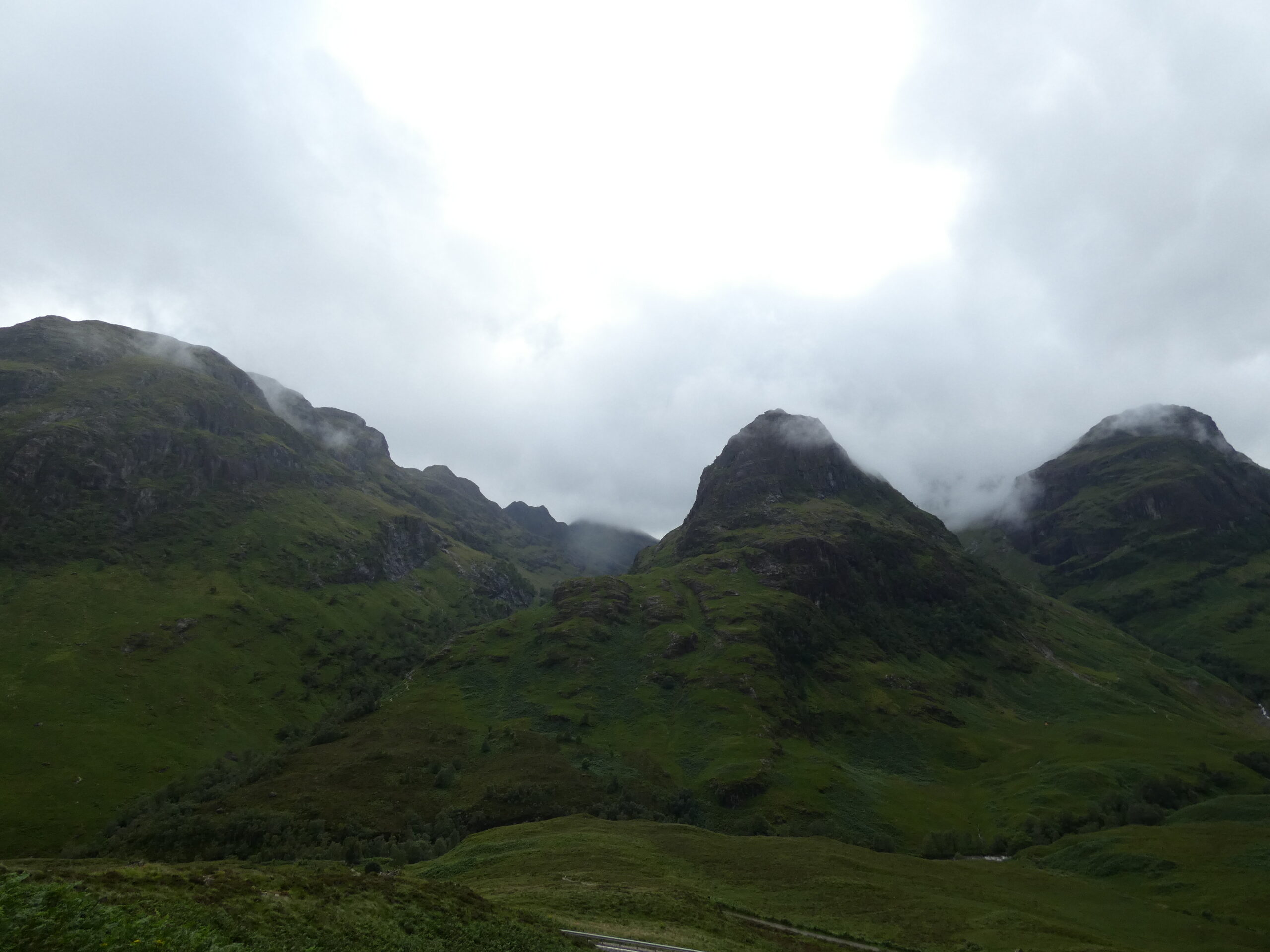
A rocky path went up the side of the hill and allowed for a better view. Something struck me in that instant. Looking up from the valley helped me envision the shape of Glencoe and glean some understanding of its vastness.
As the three sisters stood opposite the side of the hill, trying to make out details such as the swathes of glass clinging to stone and tiny streams of water running down their sides gave me a better understanding of the vastness of the world.
It was hard not to feel small, but there was a happiness to it.
It felt like my duty to see everything the world has to offer, learn as much as possible, uncover mysteries, go on adventures, and leave some sort of mark behind.
The beauty of the three sisters did not nullify our schedule.
Our path brought us over Rannoch Moor, which Dave told us is a massive peat bog. Peat is the substance that makes the water of loch ness so dark. He said the clans of old were constantly fighting over territory, but they would not fight over Rannoch Moor, since they could not reliably build there.
Anything they tried to construct would be at risk of sinking as the area was covered in swarms of biting midges, and there was no shelter from the elements. That made it more than a little bemusing when we saw camping tents set up on the moor.
A poor decision to say the least; Dave theorized that they would not be there for very long.
We made a brief, ten minute stop at Loch Tulla. More accurately, we stopped above it.
Loch Tulla was too far out of our way for us to get close, but we were able to get a good view of it from atop a hill. Seeing a loch from up high after seeing so many mountains from the level of the lochs was a novel experience.
Loch Lubnaig was our last stop for the day. It was about 6 p.m. when we arrived.
We would be staying for twenty minutes before getting back in the van for the hour and forty-minute long drive back to Edinburgh.
It was bright and sunny by the time we reached Loch Lubnaig.
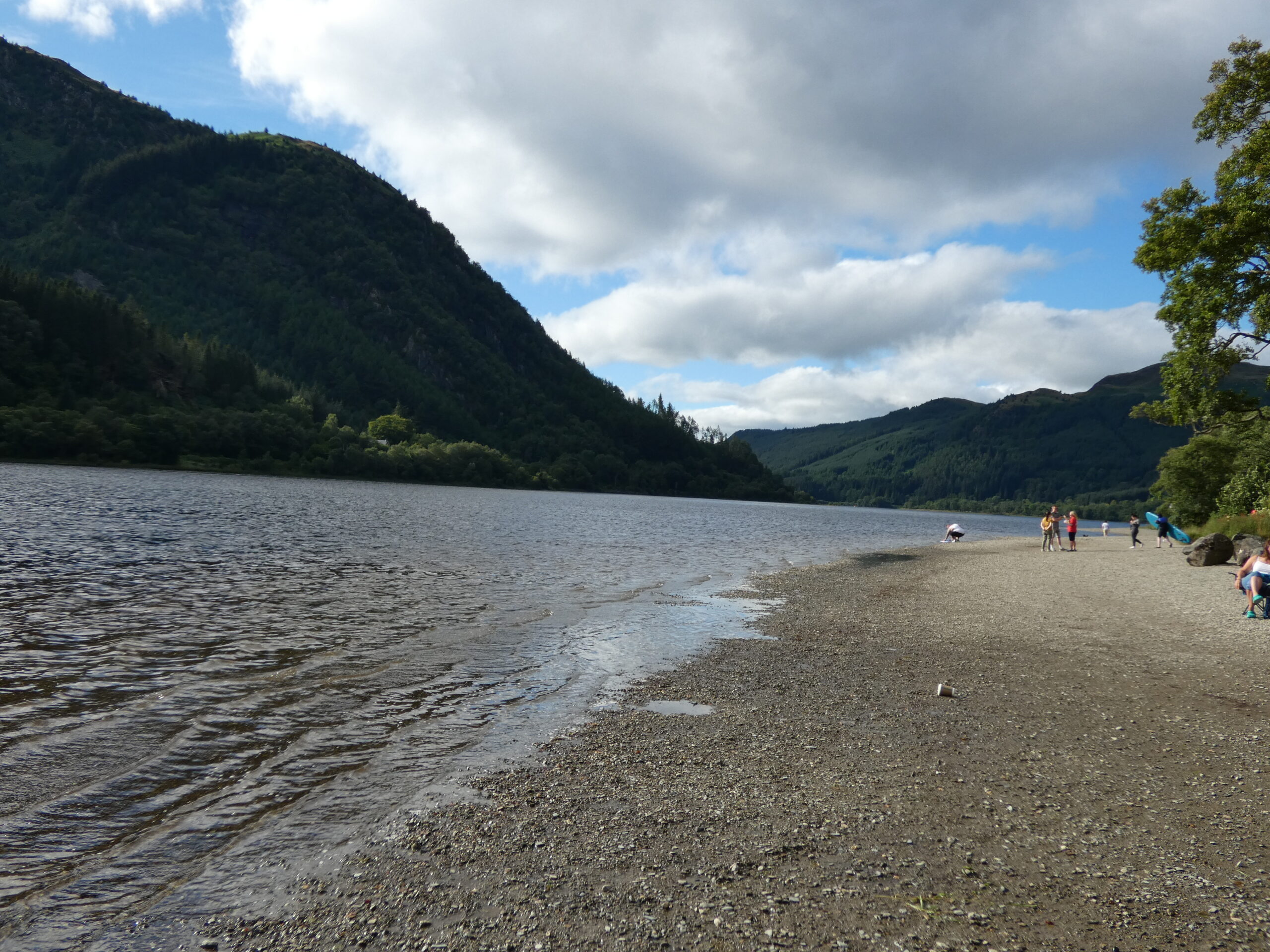
Canoes were lined up along the sandy shore. People were swimming despite the chill in the water. Many of the people on the tour took the opportunity to get themselves something to eat from the small food stall off to the corner.
It was an opportunity for me to refill my caffeine reserves and get myself a rich and aromatic cup of chai tea before settling down for an interview with Dave.
Dave said he had been working with Rabbie’s Tours for eight years. His favorite part of the tour is Glencoe because of how it changes through the seasons. His favorite part of the highlands to visit, outside of the tour, are the more natural and wild parts.
Dave advised people who are considering visiting the highlands avoid doing so when it is busy.
“August is the time of the festival in Edinburgh, and so it’s the busiest time of the year in Edinburgh, and whatever happens in Edinburgh radiates out throughout the whole of the highlands, throughout the whole of the country,” he said.
Dave also said to take things slowly if you are going to be in Scotland for more than a few days.
“If you’ve got the energy, walk. Go on a long walk. Do the west highland way, for example, or one of the other long-distance walks in Scotland. They’re beautiful, and they don’t have to be difficult, ‘cause there’s companies out there that will carry your bags for you and things. So slow down,” he said.
When I asked Dave if he had anything else he would like to say to anyone who was considering visiting Scotland, he grinned brightly.
“Come! Enjoy it!” he said. “Do Rabbie’s tours! But once you’ve done a Rabbie’s tour and you’ve got a taster of the places that Rabbie’s goes to, then slow down, go back to your favorite places, and spend as much time there as you can.”
I was certainly glad that I did.
The tour had taken twelve hours by the time we returned to Edinburgh, but I felt awake and exhilarated. The tour was a good choice given I only had three days in Scotland. However, when on my next visit, I plan to take Dave’s advice.
Slow down, and take my time.







